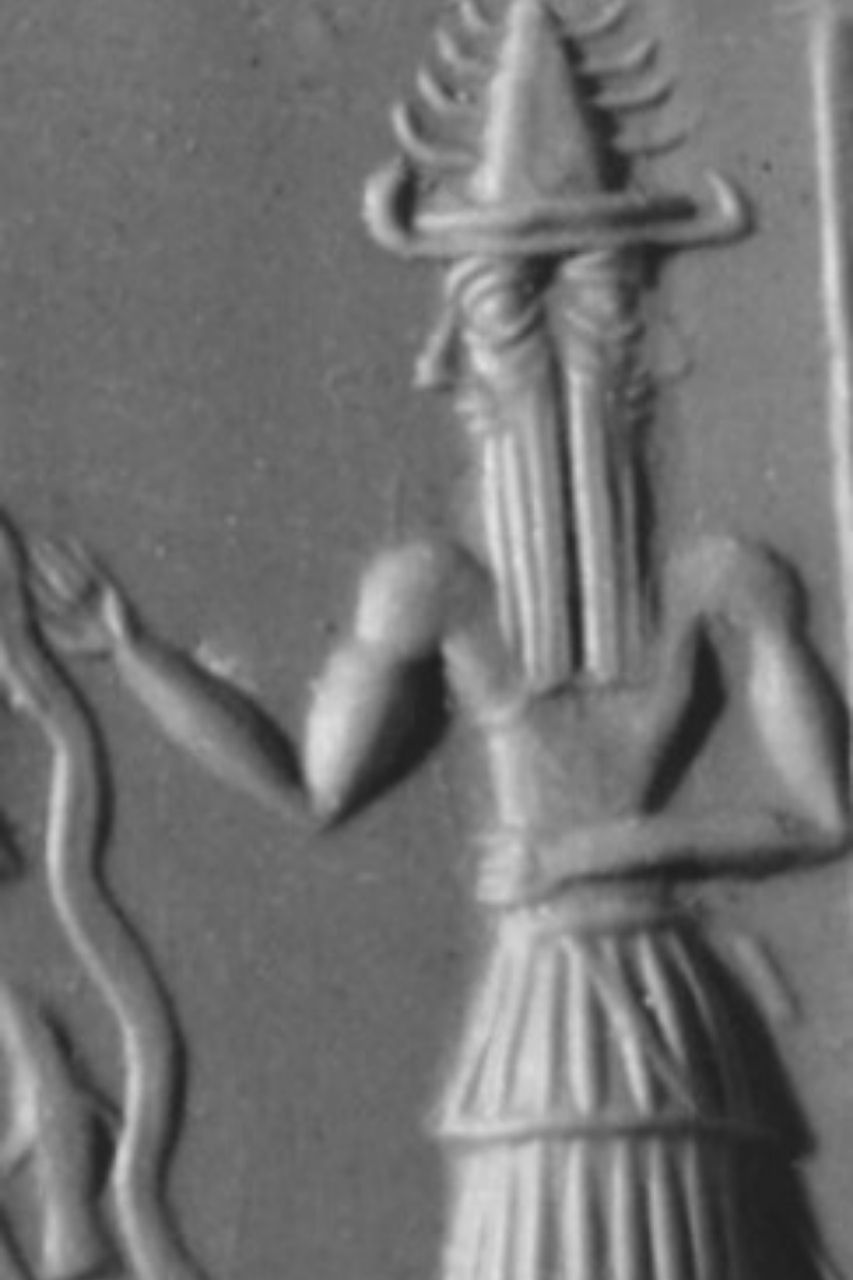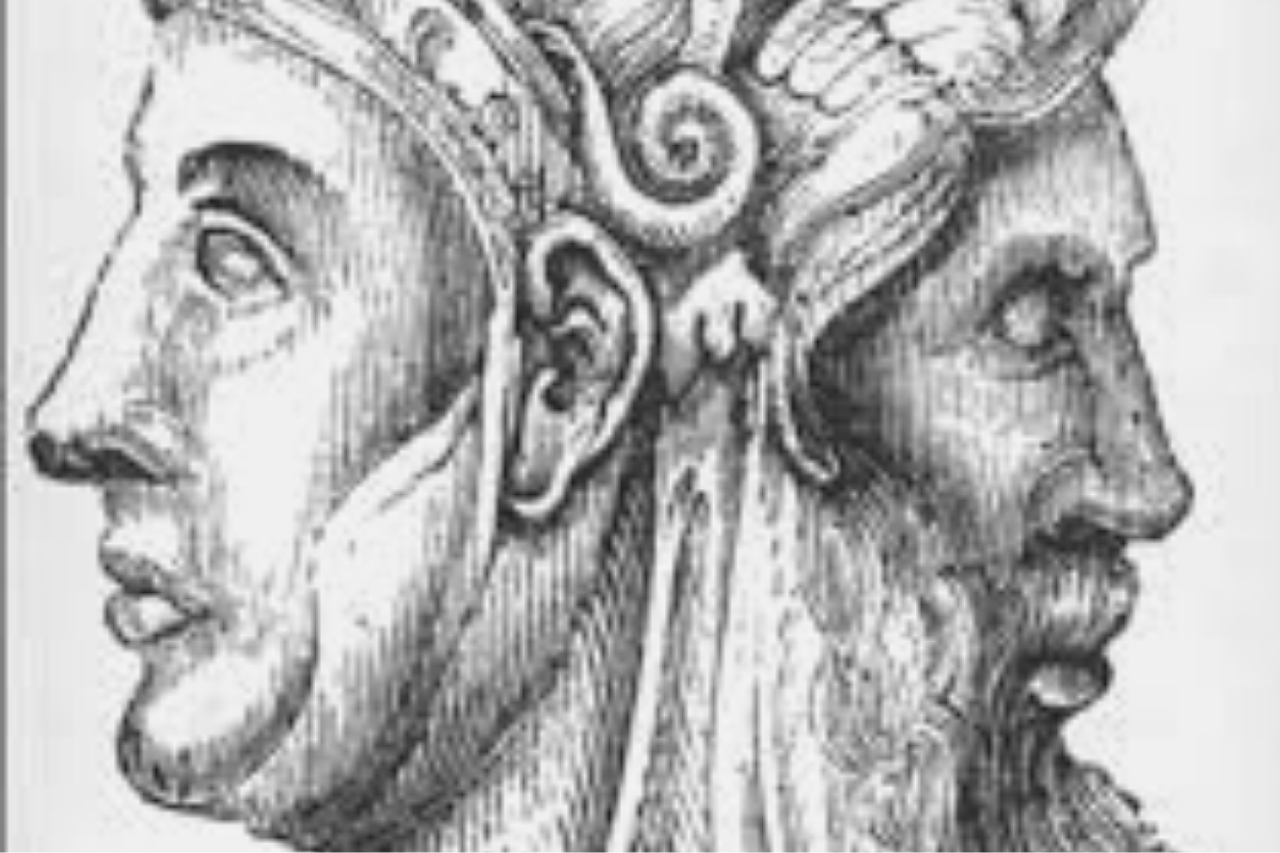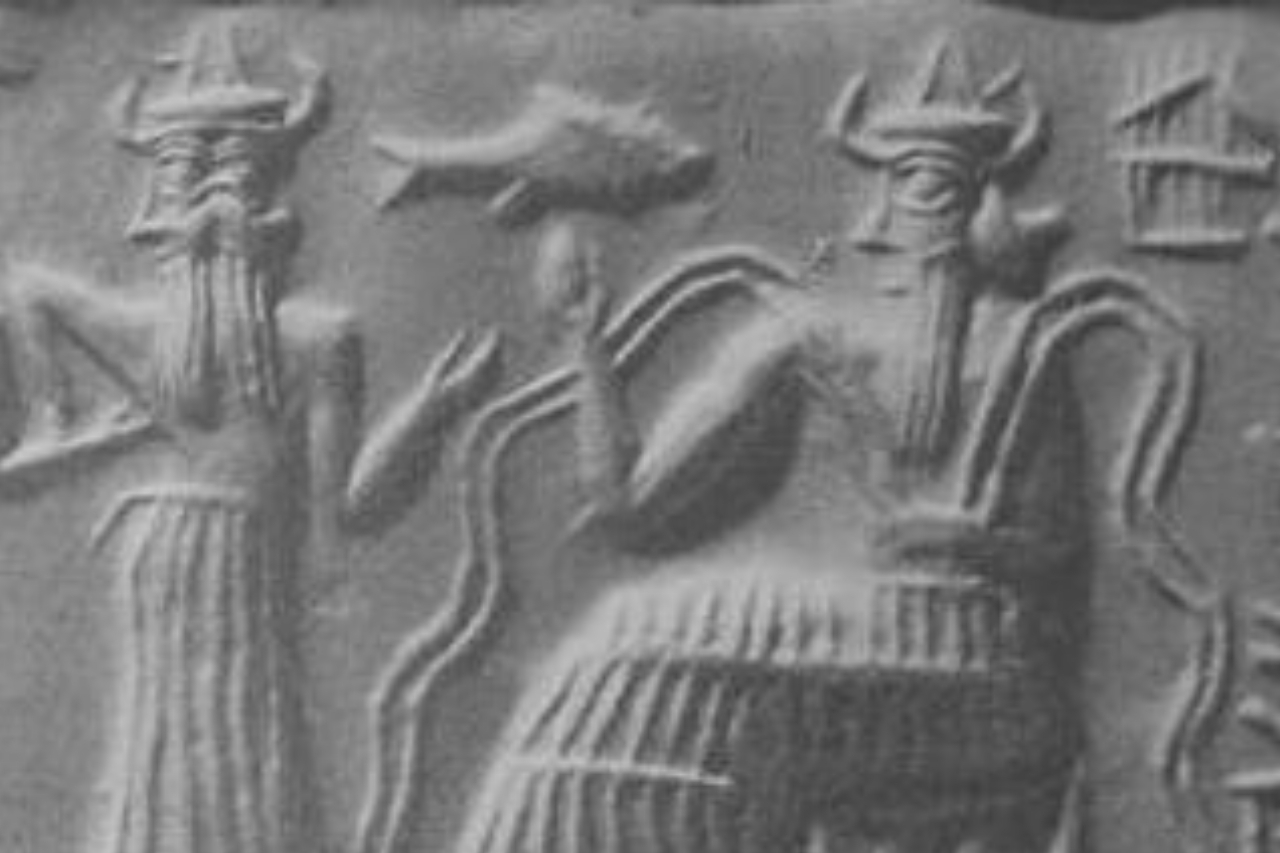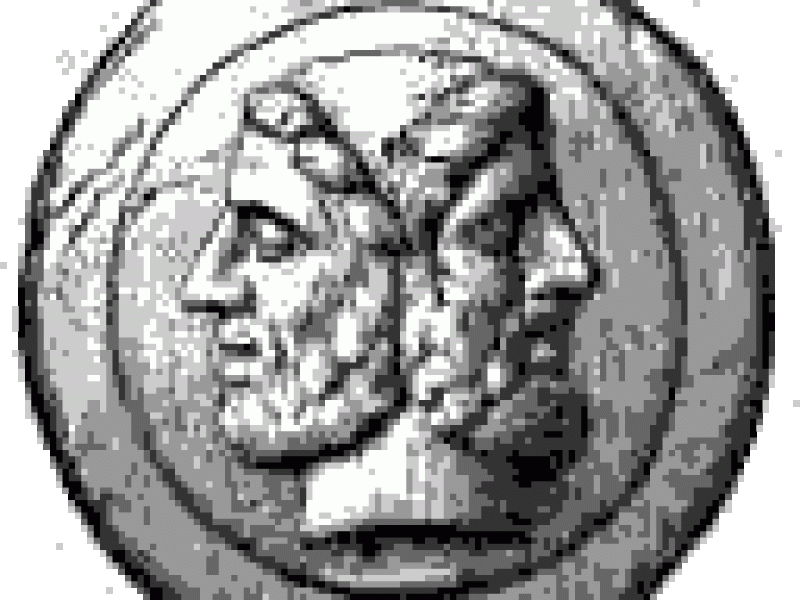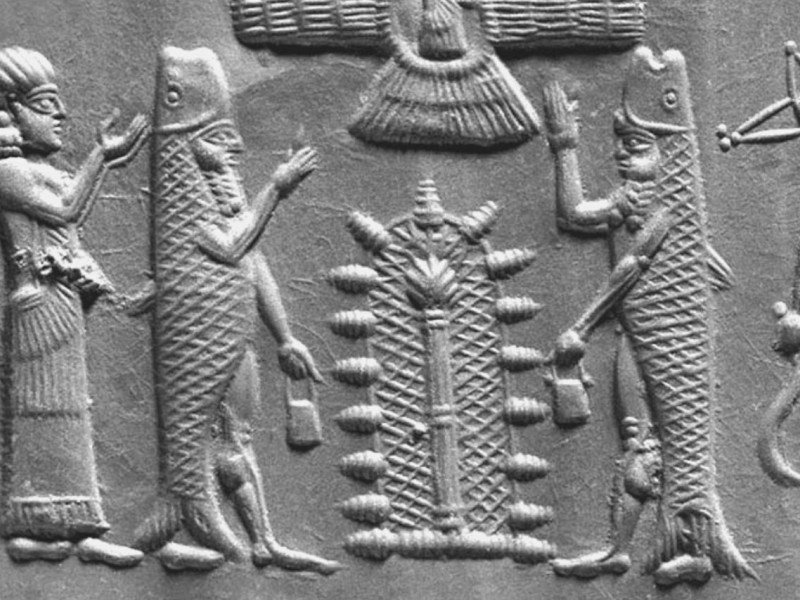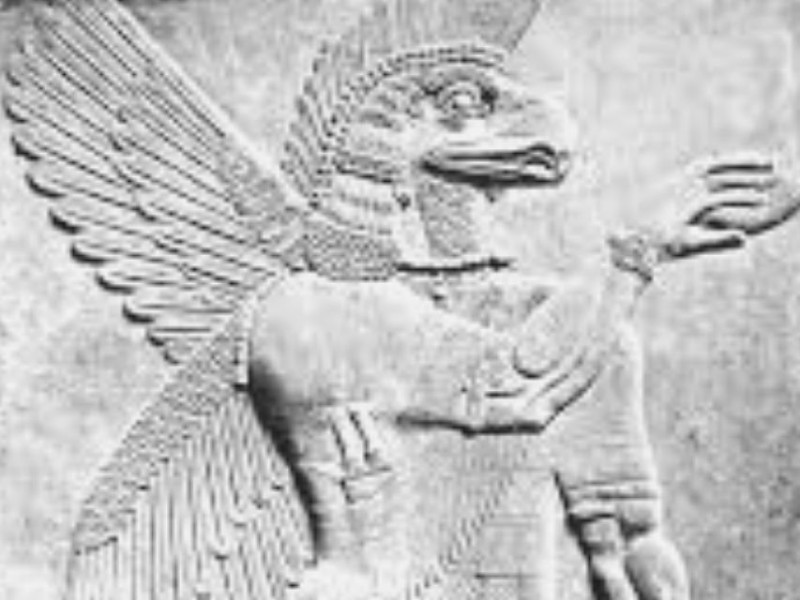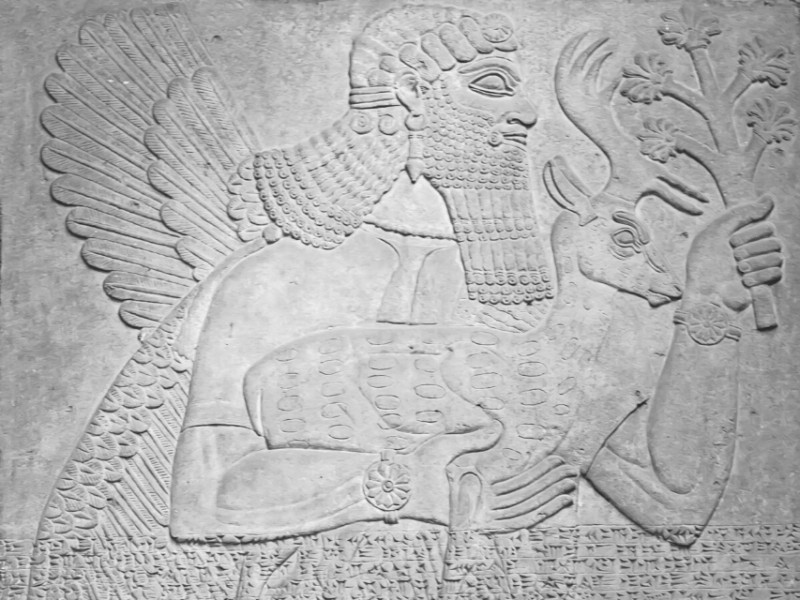Isimud: Exploring The Truth About The Two-Faced God and Duality
Isimud, also known as Usmu in Akkadian legends, was a Mesopotamian god. In Sumerian mythology, Isimud the “two-faced god” was a sukkal of the god Enki.
Isimud originally made his debut in the Mesopotamian myth of “Enki and Inanna”, where he’s depicted with two faces pointing in opposite directions, a staff, a pointed branch-like hat, and sometimes with bird feet and wings.
He was the messenger for not only Enki, or Ea, but also the fastest deliverer of messages to all the gods. Read on to find out more about Isimud.
Who Is Isimud? His Role in the Inanna Myths
In the scenes where Isimud is presented, he is shown to have been informing Enki, her father in certain versions of the mythology, of the whereabouts of Inanna. The legend of “Enki and Inanna” shows how she became imbued with the power she is worshipped for in Sumer.
While Enki is drunk from feasting, Inanna tricks her father into giving her several items and powers — one of those items being a majestic Boat of Heaven and these powers being known as mes.
Isimud is ordered to go to Inanna, stop her from using the Boat of Heaven, and bring it back to Enki. Isimud is sent by Enki a total of seven times to confront Inanna about the Boat of Heaven. The myth primarily shows Isimud’s efficient and amenable work as a messenger and vizier.
By Isimud’s tone to Inanna, he speaks with authority. He enforces the rules of Enki who is a force of nature represented by the primordial deity. Isimud, as the sukkal, has in himself the qualities of Enki.
Yet, despite legends showing him and his personality briefly, Isimud shows a deeper and more overlooked side to him due to his iconography. His statues and worship speak volumes of his philosophical meaning.
This deeper meaning of Isimud can be seen by understanding the basic principles of the ancient Mesopotamian philosophy. The mythologies and legends show the personification of these principles, but do not overtly express the occulted meanings of the personifications.
Sukkal
Isimud is what is known as a sukkal. In Sumerian, a sukkal is akin to vizier. A sukkal could relate to a human official for a god, or another servant deity to a god. Normally the most prominent gods had sukkals. Ancient Mesopotamians believed that when praying to their gods, the sukkal would present themselves on behalf of the god as an interlocutor.
Isimud and Duality
The concept of two-faced gods represents a part of nature that has always existed. This concept is duality; the themes of two: female and male, night and day, good and bad, et cetera, all pertain to duality.
This duality is present across religions and philosophies. In the Taoist philosophy, you have the famous yin and yang. In Gnosticism and Kabbalah, you have the pleroma and the kenoma (pleroma meaning “full” and kenoma meaning “empty”).
Another famous representation of duality in the divine and nature is the symbolism of twins. Isimud isn’t necessarily a pair of twins more than he has two faces, but one could link and associate Isimud to twins, even conjoined twins, due to his two faces. Keep reading to discover more about the deity dualities in different cultures.
The Mesopotamians and Deity Duality
The ancient Mesopotamians are our earliest known source documenting this duality in a deity. The effect of duality being represented as a deity seemed to have trickled from the Mesopotamians to the ancient Romans. Janus, an ancient Roman deity, had similar iconographic depictions to Isimud and similarities in persona.
The Egyptians and Deity Duality
Their near neighbor, the ancient Egyptians, also had a personification of duality with female and male counterparts. This eight-set of deities were named the Ogdoad. The Ogdoad goes as follows: Amen and Amenet; Nun and Nunet; Heh and Hehet; Kuk and Kuket.
The male gods were depicted with frog heads and the female goddesses are depicted with snake heads. They were reduced to four primary deities and were aligned with four elements.
The Dual Gods
Nun and Nunet represented water, Amen and Amenet represented air, Kek and Keket represented fire, Heh and Hehet represented the earth.
In the mythos of the Ogdoad, they died and moved to the underworld which they called the “duat”. The duat is the underworld.
Though this isn’t a direct influence of Isimud or Janus having two faces, it still is a representation of duality, of a blending of two distinct forces.
Isimud and the Divine of Other Cultures
Romans, Astrology, and Their Relation to Isimud
Pertaining to the ancient Roman culture, Janus was the god of opening doorways and roads. Isimud, on the other hand, was a messenger. Janus could see both the future and the past. Isimud isn’t described with those qualities.
We see this idea abstracted into mystic-philosophical systems such as astrology. In astrology, there are a few signs that represent duality. Particularly, Gemini and Pisces. Gemini is known as “the twins.”
Most pertain Gemini to the Greek legend of Castor and Pollux. Yet, the mythology associated with the constellation of Gemini also has its history in ancient Mesopotamia, particularly in Babylon.
Gemini and Isimud: Twin God in Astrology?
These twin gods were known as Lugal-irra and Meslamta-ea. Similar to Castor and Pollux by iconography, yet similar to Janus in power. These minor twin gods were worshipped as the ones who opened doorways and opened roads.
Lugal-irra and Meslamta-ea didn’t seem to be too similar to Isimud, except in the identification of dualism represented in the divine. These Mesopotamian twin gods were also associated with Gemini.
Gemini isn’t associated with crossroads and balancing good and bad as much as it is represented with communication and sending messages just as Isimud is.
Pisces and Isimud: How Are They Connected?
Pisces is another astrological symbol related to duality. Like the Gemini having two humans, Pisces has two fish swimming in the opposite directions. Pisces is associated with linking the physical reality with the metaphysical reality, the overworld with the underworld, and with crossroads. Pisces is more similar to Janus in power than it is with Isimud.
Yet Pisces does have a connection to Isimud. Akin to how the constellation and zodiac of Gemini were associated with the twin gods of Mesopotamia, Lugal-irra, and Meslamta-ea, the constellation and zodiac of Pisces were associated with the primordial god Enki. Which is fitting as Isimud is, again, the sukkal of Enki. So there is some connection by loose association.
Isimud Representation in Africa: Eshu and Ibeji
In the African diasporic pantheon of Orishas, two deities deal with representing doorways, road openings, and duality: Ibeji and Eshu.
Eshu, god of the crossroads, balances all good and all bad in life. Eshu, much like Janus, was a deity believed to be the ultimate enforcer of nature’s law. Eshu is known as a trickster and the ultimate prankster, slightly similar to the persona of Isimud.
Eshu is primarily a god of Yoruba culture, yet has other names in African diasporic religions in North America, South America, and the Caribbean. Other names associated with him are Eleggua, Exu, Eshu-elegba, and the most popular manifestation of him in culture is Papa Legba of Haitian Vodou.
The Ibeji, or also known as the Ibeyi, is an Orisha who represents twins. Ibeji means “twins” in Yoruba. In the case of one twin dying, it’s bad luck for the community of the twins. A special gifted person called a “Babalawo” is instructed to carve a wooden Ibeji.
This wooden Ibeji is sculpted to have symbolic gestures and meaning. The parents must treat this Ibeji as their own child in order to protect themselves and their community. Like Isimud protected by Enki, the twins that the Ibeji represent and the Ibeji themselves are granted protection from Shango, another primordial Orisha.
More iconic cultural symbols of these mischievous, messenger, and duality balancing deities include the Heyoka of Native American Sioux culture, the Japanese deity Jizo, and the Juha and Nasreddin of Sufi mysticism.
Conclusion
Isimud, or Usmu, is a minor god. He appears briefly in written Mesopotamian epics and is shown as a messenger. Yet, his iconography being plastered inside of homes and all over temples show he had more than a minor role in the philosophy of the Mesopotamians.
Isimud is a sukkal of Enki (or Ea)
A sukkal is an appointed official or intermediary for the primordial and important deities
Isimud has a minor role in the written text, only being shown ordering Inanna to bring the Boat of Heaven back to her father Enki
Isimud represents a deeper meaning of duality in nature
Other cultures after the Mesopotamians have explored dualism in the divine
Janus is an ancient Roman god who is directly similar to Isimud for they both have two faces
Despite Isimud’s role being minor, his influence has been great across cultures
Similar gods to Isimud are Ibeji, Esu, Heyoka, Jizu, Juha and Nasredin, and the Egyptian Ogdoad
The constellation of Pisces is connected to Isimud through Enki
In this article, the occult meaning of Isimud has been explored. From his similarities to near Roman gods like Janus, to his relations to the astrological sign of Pisces, and his similarities to even African Orisha pantheon — the two-faced god only seems to have made a large impact on religions, the way they see nature and duality.
